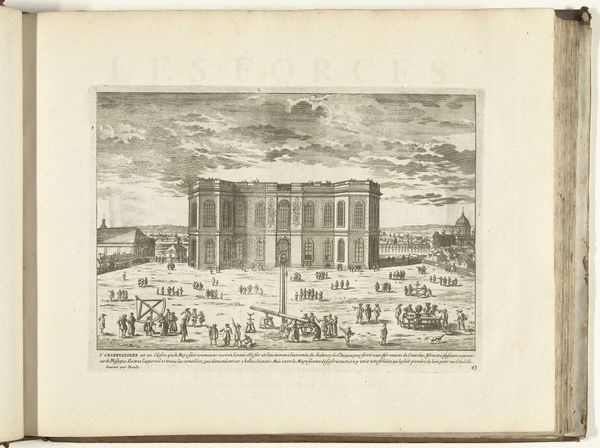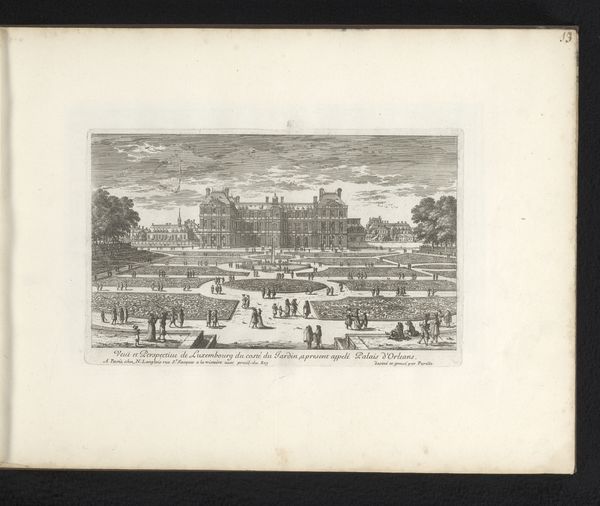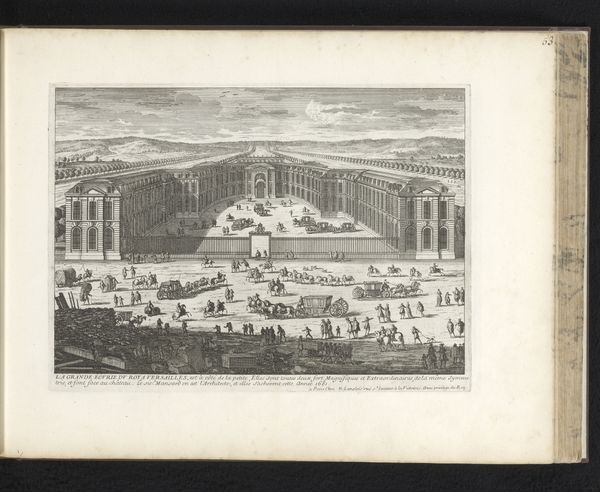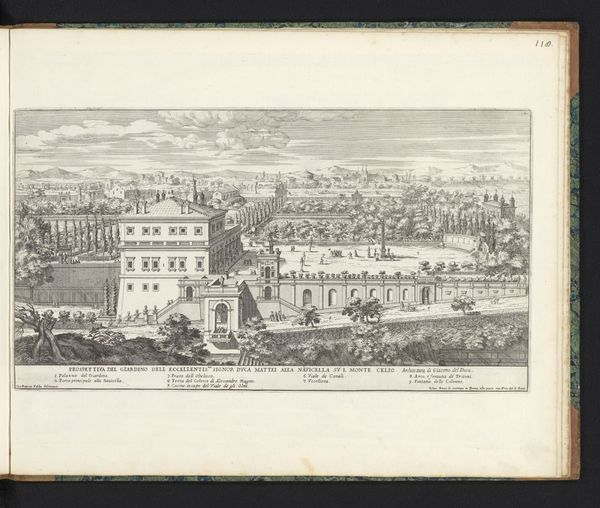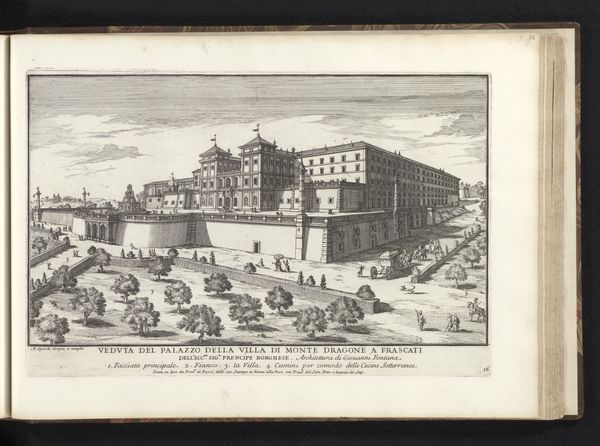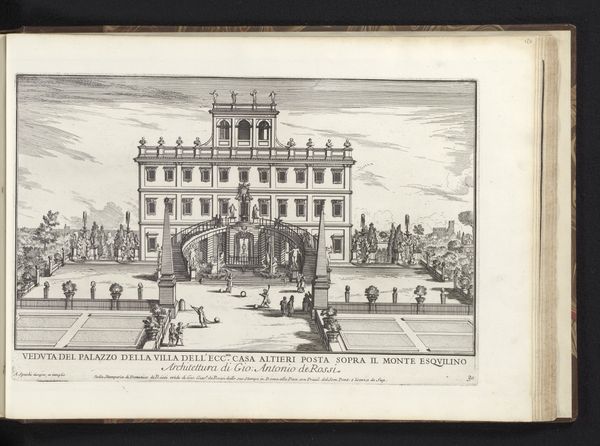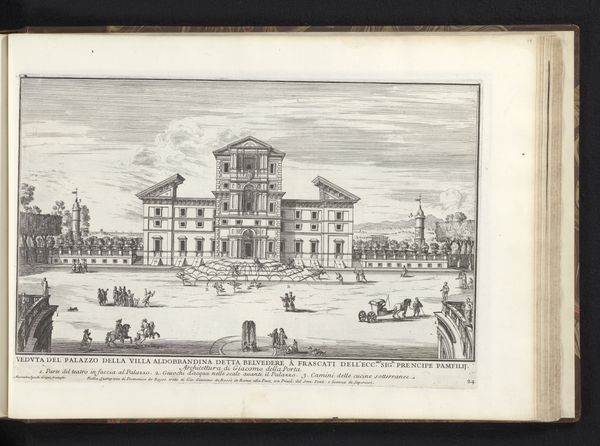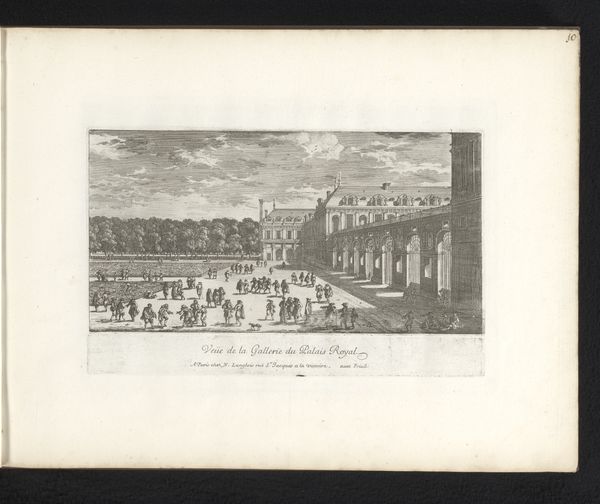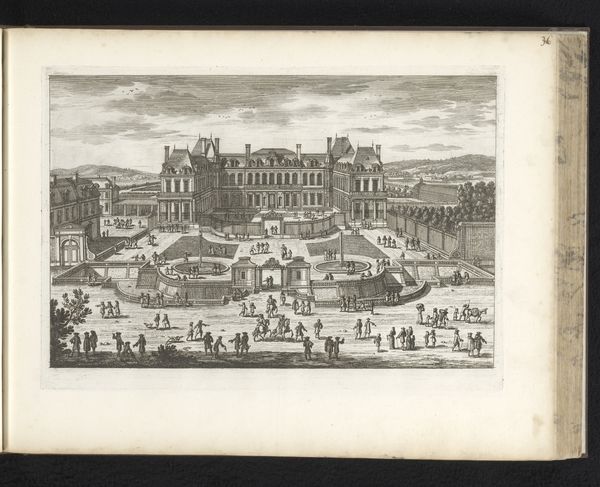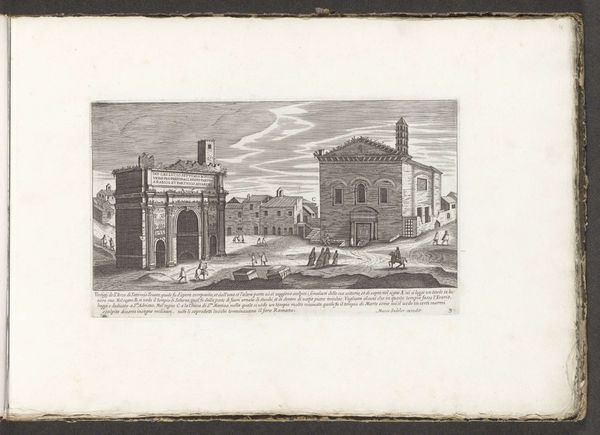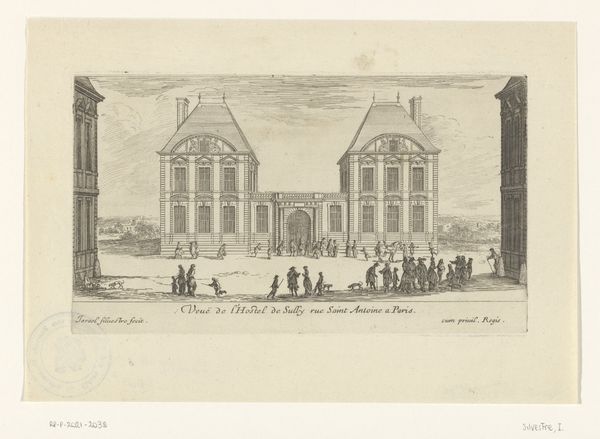
print, paper, engraving, architecture
#
baroque
# print
#
paper
#
line
#
cityscape
#
engraving
#
architecture
Dimensions: height 193 mm, width 281 mm
Copyright: Rijks Museum: Open Domain
Adam Perelle created this print of the Paris Observatory in the late 17th century, using etching, a printmaking technique dependent on acid. Notice the crisp lines and fine details, achieved by coating a metal plate with wax, then drawing through the wax to expose the metal. The plate is then immersed in acid, which bites into the exposed lines. Ink is applied, the surface wiped clean, and the print is made. This process, relatively new at the time, allowed for the precise and repeatable rendering of images. Consider the social context: the Paris Observatory was a symbol of scientific progress and royal patronage under Louis XIV. The print medium allowed for the widespread distribution of this image, celebrating not only the architecture of the building but also the power and prestige of the French monarchy. It turns the progress of science into a commodity that is easily distributed. By focusing on the materials and processes involved in its creation, we can appreciate this print not just as a picture, but as a product of its time, reflecting both artistic skill and the rise of mass communication.
Comments
No comments
Be the first to comment and join the conversation on the ultimate creative platform.
